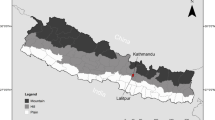Abstract
Denver Housing Authority (DHA) has invested considerably into designing, building, and maintaining a resource efficient portfolio and this effort is becoming increasingly comprehensive as they continuously refine and build upon their approach. One of the more recent strategies was to incorporate resident engagement efforts focused on energy and water efficiency into their programming as a way not only to maximize realized energy savings from these investments but to also to engage with building occupants around sustainability initiatives and develop a holistic approach to reducing their resource consumption. In 2014, DHA hired Energy Outreach Colorado and Group14 Engineering (the Team) to develop and implement a voluntary program designed to encourage positive environmental and social actions around energy and water use. The Team developed a comprehensive resident engagement and outreach program involving on-site staff, resident leaders, and residents. The program plan identified both low/no-cost solutions and more extensive outreach efforts targeted at the DHA Westridge community. Upon completion of the pilot, the program achieved 24,864 kWh (4.5%) savings in electricity consumption. Valued at the 2014 effective blended rate for Westridge, this equals $3493 dollars in annual savings and a program payback of 11 years. The project’s participation goal was exceeded, with 60% of the neighborhood households participating in the program. The team concluded that achieving savings through resident engagement is possible but also the level of effort put forth in the project is important to consider.

Similar content being viewed by others
References
Ehrhardt-Martinez, & Latner. (2010). People centered initiatives for increasing energy savings. In Washington. ACEEE: D.C..
Fogg, B.J. (2009). A behavior model for persuasive design. Proceedings of the 4th International Conference on Persuasive Technology. Article No. 40.
Li, C. (2014). Home energy consumption estimation by end use and energy efficiency upgrade recommendations. Nicholas School of the Environment: Duke University.
McNary, B., & Berry, C. (2012). How Americans are using energy in homes today. Summer Study Course on Energy Efficiency in Buildings: ACEEE http://aceee.org/files/proceedings/2012/data/papers/0193-000024.pdf. Accessed 30 May 2016.
Society for Personality and Social Psychology. (2014). How we form habits, change existing ones. ScienceDaily. www.sciencedaily.com/releases/2014/08/140808111931.htm. Accessed 30 May 2016.
Funding
This project and study was funded by Denver Housing Authority.
Author information
Authors and Affiliations
Corresponding author
Ethics declarations
Conflict of interest
The authors declare that they have no conflict of interest.
Rights and permissions
About this article
Cite this article
O’Connor, N., Macur, R. Engaging residents in affordable housing—resident engagement pilot at Denver Housing Authority Westridge apartments. Energy Efficiency 11, 1871–1886 (2018). https://doi.org/10.1007/s12053-018-9641-9
Received:
Accepted:
Published:
Issue Date:
DOI: https://doi.org/10.1007/s12053-018-9641-9




